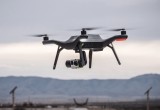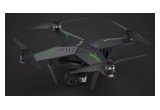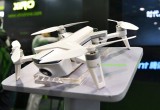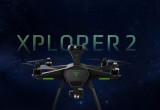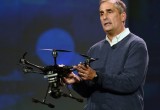DroneCompares.com Looks at Finding the Right Unicorn in the Consumer Drone Sector
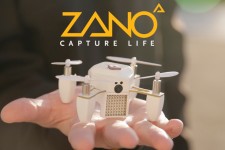
New York, NY, May 30, 2016 (Newswire.com) - Drones are seemingly everywhere today, and they’re rolling out of factories – mostly in China. Trying to pick a winning investment in the nascent sector, though, has so far proven elusive.
Manufacturing of consumer products typically draws an array of enterprises, both small and large. It’s a bit different for consumer drones, though. There are inherent entry barriers, which is one reason why 99% of drone companies are simply into assembly. It has been a different story for drone companies with a strong technological base. They’ve found themselves as some of the most-sought-after investment targets, favored by venture capitalists, private equity firms and all sorts of older, larger companies looking to make an investment in “future” technology.
Since 2014, reports of drone manufacturers seeking A/B/C rounds of venture capital financing have been commonplace.
The most sought-after manufacturers — Zano, 3DR, Zero Tech, Ehang and even Yuneec, which received a capital injection from Intel — have had fairly splashy launches of their new products and broad coverage in print media and via video.
As an investment, though, these companies have been a mixed bag in terms of results.
Zano – Near-Failure to Launch
A Zano promotional video released on KickStarter showed a Palm-sized Zano drone with functions such as “followme,” “throw and take off” and “automatic selfie,” all of which helped to boost the forthcoming product’s popularity. Publicity helped the Torquing group raise over $3.4 million from tens of thousands of users, making Zano one of the most-popular KickStarters of the year.
But marketing and contributions don’t build your drones. The media were able to eke out only a few details of the Kickstarter’s progress. Arstechnica reported that only 12 substandard, not ready-to-fly Zano units were produced, when they interviewed Zano two months before the promised shipment date. Considering the sophisticated technology that was supposed to be integrated into the Zano, many a delay.
It was even worse than that. Zano ended up shipping only 600 units, none of which lived up to what was promised in the promotional video, 15,000 orders went unfilled, and the heavily funded Kickstarter campaign simply collapsed. End of story, with Zano down the drain-o.
3DR: An experiment with open source code
3D Robotics, founded by Chris Anderson, attracted numerous university students and fans to join in an ambitious project of APM flight control via open source code. The challenge with many open source projects is where to find the revenue and margins to keep growing the business.
In February 2015, 3D Robotics raised $50 million in a C round of funding from heavyweight Qualcomm Ventures, along with Foundry Group, Mayfield, O’Reilly AlphaTech Ventures, Shea Ventures and True Ventures. The cash infusion enabled 3DR to launch its SOLO drone at the National Association of Broadcasters show in April 2015. The promise of “smart shots” – photo shots set up very quickly and executed by the SOLO — made it a hotly anticipated consumer drone.
Three months after NAB, consumers were still waiting for the Solo’s launch. Though various videos were posted on 3DR’s official website teased the drone’s features, consumers expressed frustration at MIA deliveries. At last, SOLOs were shipped to customers, but it wasn’t long before grumbling started about how actual performance didn’t match expectations. An initial shortage of accessories and issues with after-sales services also limited the Solo’s appeal.
Fourteen months after its C-round financing, 3D Robotics closed its Austin branch and shut down facilities, including warehouses, R&D and customer service telephones in San Diego. The company also dismissed most employees at Ardupilot, now the only remaining company facility in Berkeley, California. In the restructuring, 3DR founder Jordi Munoz left the company, and toward the middle of 2016, the experiment in open-source flight control looks less enticing than it did ahead of the Solo’s launch.
Who’s on First? Rift among Rapoo, Beijing ZEROTECH and Shenzhen Zero
ZEROTECH was one of the earliest drone companies founded in China. Headquartered in Beijing, it owes its beginnings to Yang Jianjun. In January 2015, Shenzhen Rapoo Technology, one of the world’s largest producers of computer mice, put $7.6 million into ZEROTECH and co-founded Shenzhen Zero UAV Tech.Co., Ltd., an offshoot of the Beijing company.
One month after the investment, Shenzhen Zero announced the launch of the Xplorer. The modular, ergonomic design drew a fair bit of attention from consumers and the media.
And while the launch event was a success, the first batch of users had to wait for three months to get their drones. Shortly thereafter, customers started to question product functionality and complained about the user experience. Amid weak sales, there were rumors of a rift between Rapoo and ZEROTECH. At CES 2016, Shenzhen Zero announced it was partnering with Tencent and the forthcoming release of a foldable drone – called YING – and a successor to the Xplorer, the Xplorer 2.
Meanwhile, Beijing ZEROTECH announced its own new drone which would empower people to take selfies. That was fine, but it also publicly exposed divergent product and development strategy between the Shenzhen arm of the company, backed by Rapoo, and Beijing ZEROTECH.
And, months after CES, none of the three drones are in the hands of consumers.
Intel and Yuneec are friendly to each other in name only
With PC and smartphone sales slowing, U.S. giants Intel and Qualcomm have been eager to find new markets for their chipsets. The consumer drone market has proved alluring.
Nonetheless, Intel was relatively slow to enter the consumer-drone sector. When it did enter the market, with a $60 million investment into Shanghai-based Yuneec, it made a splash. And earlier this year, it bought German drone company Ascending Technologies.
Intel has been anything but a passive investor, showing strong desire to adapt and put its own technology into consumer drones. Intel’s RealSense, a 3D camera module, was originally positioned as a consumer-grade motion-sensing device. Then, it grafted the module onto Yuneec’s Typhoon H, repositioning it as an obstacle-sensing module at an affordable price for consumers.
During CES 2016, Yuneec demonstrated the obstacle avoidance and tracking capabilities of the Typhoon H, garnering a large amount of coverage and attention. Intel acknowledged that, on top of its RealSense module, it also utilized a much more-expensive Vicon system to perform its demo.
The Typhoon H recently started to ship to consumers, around five months after CES, but without RealSense and with obstacle avoidance limited to two onboard ultrasonic sensors that work out to about five feet. RealSense is due to come out for the Typhoon H later this year as an add-on.
It’s critical for Intel to get RealSense technology right with the Typhoon H. If it works right, that could give Intel the technological foothold it covets in the consumer drone sector.
DJI
The 300-pound gorilla in the room is DJI. Founded by a group of 20 in 2006, the Shenzhen-based company has grown to over 5,000 employees, and it claims a market share of 70% in the consumer drone sector. Others have put that share at closer to 50%.
Regardless, as goes DJI, so goes the sector. It’s the company customers and rivals love to love and love to hate. DJI heralded the beginning of the sector with the world’s first-ever consumer drone that was ready to fly out of the box – the Phantom. While Frank Wang’s company didn’t invent the quadcopter form factor, it has made it iconic.
And the breakneck speed at which it has churned out four generations of Phantoms has left many rivals in the dust. At the same time, DJI has also refashioned itself into a camera company and an image-stabilization company. It has had made as many enemies as friends in its development, acrimoniously parting with its North American head, ditching action-camera company GoPro and fending off copycats and rivals
One thing DJI has never had a problem with is attracting investment. The company has picked up $105 million in two rounds of financing from partners including Sequoia and Accel Partners, but has shown little interest so far in reaching out for further funding.
The company is an outlier, because unlike other Chinese companies, it didn’t start in OEM and was built on its own technology. It’s an IP center, with over 500 patents globally, and appears more focused on outpacing and raising the bar on competitors through massive R&D efforts. It has 1,500 engineers and developers on staff and spends the bulk of the money invested and earned on new breakthroughs, shortening product cycles and pushing into new, horizontal sectors that bring it into competition with non-drone companies.
DJI is intriguing because it is both the industry bellwether and a barometer for consumer-sector saturation in some markets. The question, still unanswered, is how many drones are enough in the consumer sector. It has yet to have made a serious misstep or a noticeably bad investment in technology. But it’s known as a company that’s moves so quickly, its firmware sometimes needs to catch up with hardware development.
The big question is where DJI will turn to next and what kind of cash it will need to go there. In the past couple of years, DJI has moved into both the prosumer and professional/enterprise drone markets, with software, sensors/cameras and hardware aimed at new sectors, including the film industry, agriculture, industrial inspection, search & rescue and others.
Source: http://www.dronecompares.com/

